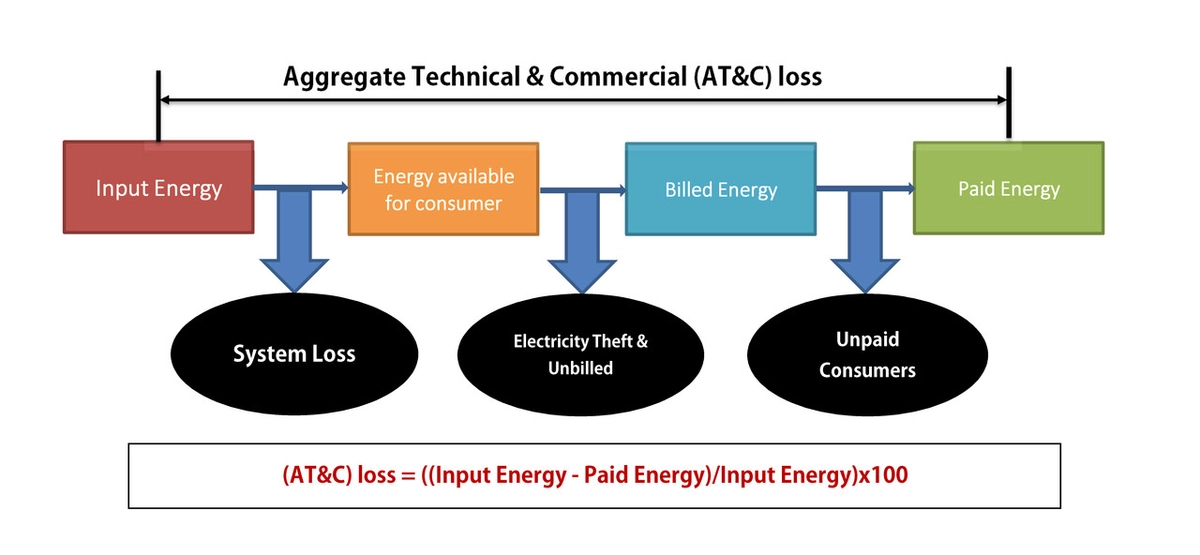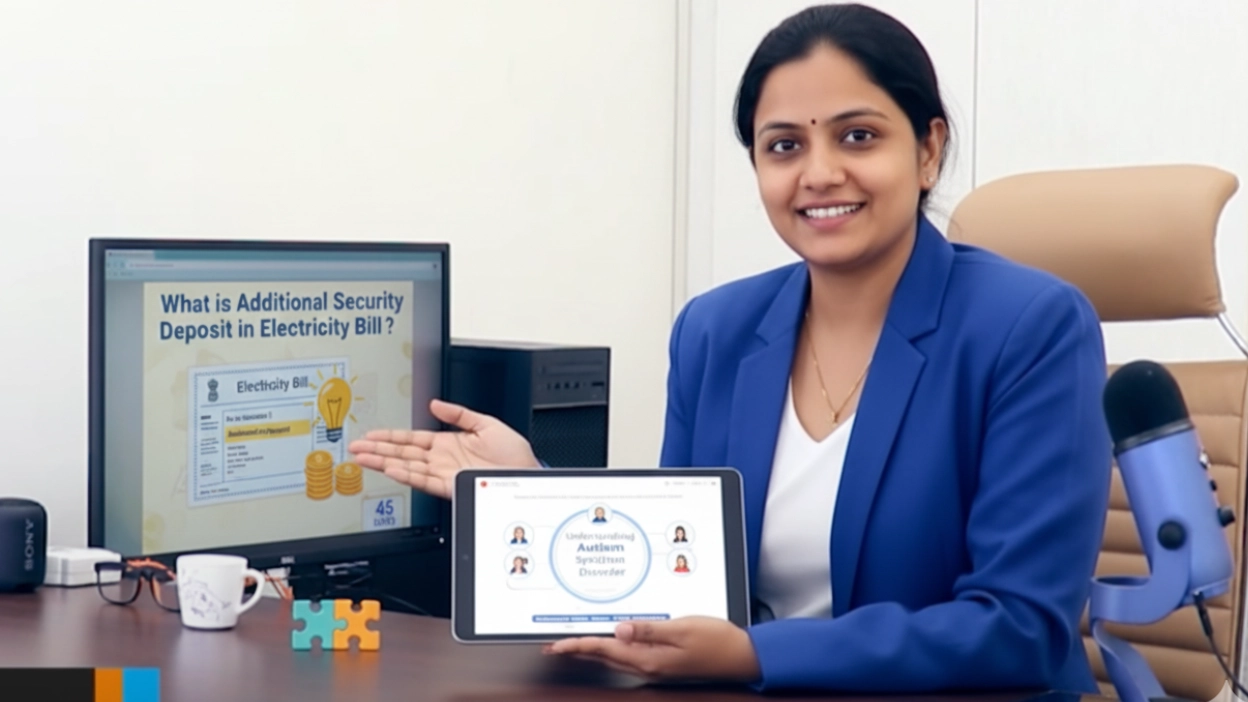Aggregate Technical & Commercial (AT&C) Loss is one of the most important indicators of performance for a power distribution utility. It represents the overall gap between the energy input into the system and the energy for which payment has actually been received.
In simpler terms, AT&C loss combines both:
- Technical Losses — energy lost due to transmission and distribution inefficiencies (like resistance in wires, transformer losses, etc.).
- Commercial Losses — energy lost due to theft, defective meters, unbilled units, or non-payment by consumers.
Thus, AT&C Loss gives a true picture of how efficiently a DISCOM manages power distribution and revenue realization.
Formula for AT&C Loss
AT&C Loss = {1−(Billing Efficiency x Collection Efficiency)}×100Where:
- Billing Efficiency: Billing efficiency measures how much of the supplied energy has been billed to consumers (both metered and unmetered).
- Billing Efficiency = Billed Energy / Input Energy
- Note: A low billing efficiency indicates unmetered or unbilled consumption due to defective meters, unaccounted connections, or electricity theft.
- Collection Efficiency: Collection efficiency represents how much of the billed amount has actually been collected from consumers.
- Collection Efficiency = Revenue Collected / Billed Amount (Current Assessment)
- Note: Low collection efficiency indicates poor revenue recovery, defaulting consumers, or delay in bill payments.
Example Calculation
This can be better understand using the following example:
Input Energy = 53 MU = 530 lacs unit Billed Energy = 50 MU = 500 lacs unit Current Assessment = 4500 lacs Revenue Realized = 4000 lacs
Calculate AT&C:
- Billing Efficiency = 50 / 53 = 0.943
- Collection Efficiency = 4000 / 4500 = 0.888
- AT&C = (1 − 0.943 × 0.888) × 100 = 16.14%
Diagram: AT&C Flow

How to Reduce AT&C Loss
- Replacement of defective meters and use of smart meters.
- Regular energy audits at substation, feeder, and distribution transformer levels.
- Strengthening of the distribution network to minimize technical losses.
- Strict action against theft and unauthorized connections.
- Improved billing and collection systems through digital platforms and data analytics.
Conclusion
- Aggregate Technical & Commercial (AT&C) loss provides the most realistic picture of a utility’s efficiency in converting supplied energy into realized revenue.
- A lower AT&C loss means the DISCOM is operating effectively—ensuring that the energy supplied is both correctly billed and fully paid for.





